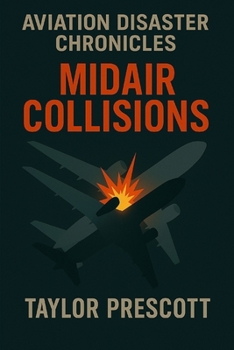Aviation Disaster Chronicles: Midair Collisions
Midair Collisions (Aviation Disaster Chronicles, Vol. 3)
A clear day. Two converging blips. One decision-or one silence-too late.
In Midair Collisions, Taylor Prescott investigates eleven collisions that reshaped global aviation, showing how separation fails when human limits, technology, and procedure misalign in three dimensions. Written with investigative restraint and technical clarity, this volume explains not just what happened-but why the system allowed it to happen.
Hughes Airwest 706 (1971): Military training meets civilian airliner in California airspace.
ANA 58 (1971): An interceptor drill over Japan turns fatal.
Zagreb (1976): Phraseology, pressure, and procedural control collapse at a critical handoff.
PSA 182 (1978): The limits of see-and-avoid over San Diego.
Dniprodzerzhynsk (1979): Soviet-era ATC constraints and cockpit hierarchy.
Aerom xico 498 (1986): Cerritos and the push for Mode C and TCAS.
Charkhi Dadri (1996): 349 lives and the global mandate that TCAS outranks ATC.
berlingen (2002): When controller instructions and TCAS conflict-and the tragedy that followed.
GOL 1907 (2006): A business jet's electronic silence over the Amazon.
Hudson River (2009): Uncontrolled corridor, crowded frequency, vanished margins.
Potomac River (2025): A recent collision still under investigation-why low-altitude geometry near runways is unforgiving.
You'll come away withA plain-English understanding of TCAS, radar, transponders, ADS-B, and why certain alerts are inhibited near the ground.
The real meaning of "maintain visual separation," and where that phrase does-and does not-belong.
A map of reforms that followed each disaster, from Mode C and TCAS to Special Flight Rules Areas and route redesigns.
A framework for evaluating new risks as urban airspace adds helicopters, business jets, light aircraft, and commercial airliners to the same sky.
For readers of:Narrative nonfiction about complex systems; aviation professionals and enthusiasts who want depth without sensationalism; anyone interested in how safety actually improves.
Understand why these collisions happened-and how the next one can be prevented.
Related Subjects
Transportation




